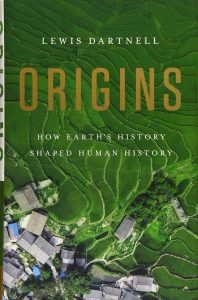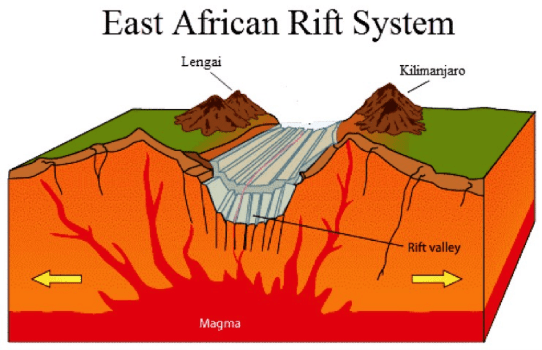 A most fascinating read is Lewis Dartnell’s Origins: How Earth’s History Shaped Human History.
A most fascinating read is Lewis Dartnell’s Origins: How Earth’s History Shaped Human History.
In his first chapter, he provides an answer to the question: What was it about our environment that selected for the emergence of us, bipedal, somewhat more intelligent than other primates, highly social, etc? More specifically, what was it about the Rift Valley in East Africa that made it the setting for the appearance of our first ancestors?
The first puzzle is why the Rift Valley at all and why that region does not share the dominance of rain forests that are the feature of the other regions in the same latitudes — Amazon, South-East Asia.
Dartnell brings together the wealth of published research into questions like these and identifies the following factors:
1. The crashing of India into Eurasia forcing up the Himalayas. To be more specific, it is the subsequent erosion of the Himalayas — the effects of ice sheets and rain — that has led damp soil to pull carbon dioxide out from the atmosphere, react with it and form calcite that is washed away down to the oceans where it is transformed into shells by sea creatures. Carbon dioxide extraction from the atmosphere has had a cooling effect on the globe. The cooling has resulted in less rainfall and a drier climate.
2. At the same time, and related to the above, moisture is being sucked into the Himalayan and Tibetan region to create the monsoon system over India and South East Asia, but this has meant the pulling of moisture from East Africa.
3. The crashing of Australia into New Guinea led to land rises that blocked off the warm waters that had flowed from the Pacific into the Indian Ocean, allowing colder waters from the North Pacific to take their place.
4. Add 1, 2 and 3 above and we begin to see why rain forests are not to be expected in East Africa.
Next scene: tectonic shifts around East Africa
5. Magma pushed up along the region from the Red Sea through to Kenya and beyond. That caused the overlying crust to slowly split, making huge cliffs either side of a new valley floor that was some half a mile above sea level.

6. The mountains forming on the east side blocked rainfall from the Indian ocean from reaching much of the valley itself. Add that to #4 above.

